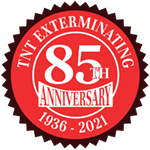Pest Management Protects Pollinators
Many types of plants, including fruit and vegetable crops depend on animals for pollination, therefore protecting bees, wasps, hornets, and other pollinators from pesticide risks is important for pollinator health.
A National Research Council Report in 2007, Status of Pollinators in North America, documented the decline of pollinators and discussed some of the possible causes.
A theory among scientists in the EPA, USDA, and the global scientific and regulatory community alike, is that the general declining health of stinging insects such as honeybees is related to pesticide exposure, and pest management professionals.
As pollinator protection, especially for honey bees and bumble bees, continues to be at the forefront of current environmental issues, controlling stinging pests such as wasps and hornets presents a unique opportunity for pest management company’s to demonstrate their care for the environment while meeting customer expectations for pest management.
After receiving a call for stinging insect control, it is important for pest management professionals to take precautions to protect pollinators while resolving the issue.
To most people, insects like bees, wasps, hornets and yellow jackets are all the same. However, proper identification is essential for determining the right approach for controlling stinging insects that may pose a danger to those needing pest control service.
Once the stinging insects have been identified, pest management professionals should integrate the necessary precautions into a pest management approach to specifically target the pest you need to control.
The following guidelines can will help you identify some of the most common stinging insects in the Northeast Ohio area.
- Paper Wasps https://tntexterminating.com/beeswasps/
Paper wasps are common stinging insects in all parts of the country. They build their umbrella-shaped nests on the underside of buildings, fences, and in a variety of voids.
How to do I get rid of paper wasps?
The easiest way to control Paper Wasps is to remove the nest by placing it in a sealed plastic bag and throwing it in the trash. If the nest cannot be safely removed, it can be sprayed with a fast-acting pyrethroid insecticide using a pin stream application.
How do you prevent Paper Wasp Nests?
Applying Demand® CS insecticide or Tandem® insecticide as a perimeter application and to the underside of eaves, porches, and fences in the spring will help discourage nest-building in these areas.
- Bald Faced Hornets
How do you get rid of bald faced hornets nests?
The large paper nest of the bald-faced hornet presents a unique challenge to a pest management professionals, as the outer layers of the nest protect the brood from topical sprays. For complete control, it is necessary to get insecticide inside the nest to control both the reproductives and the brood. A product applied as an insecticidal foam, such as Optigard® Flex insecticide, can work quickly to control both adults and brood without exciting the hornets. Use an extension wand with foam application equipment to safely inject foam into the opening of the nest. Once the nest is inactive, it should be removed from the structure to avoid secondary pest problems.
- Yellow Jackets
Yellow jackets are a constant nuisance around recreational areas as well as homes and businesses. Traps can control a few of the foraging workers, but have little effect on the colony. To achieve complete control of the site, the nest must be located and treated. Yellow jackets typically nest in holes in the ground and other voids, such as landscape timbers and behind brick veneers.
How do you get rid of Yellow Jackets?
The best method for treating these locations is to inject insecticidal foam, such as Optigard Flex, into the void. Use an extension wand when applying the foam to minimize the risk of being stung.
With proper identification and the use of tailored tools, pest management professionals can manage stinging insects while still protecting pollinators and the surrounding environment.
Attempting to exterminate bees or wasps on your own using chemical sprays from a hardware store is not recommended. If these sprays are not applied in the correct locations, most of the bee or wasp colony will survive.
Angry bees and wasps increase your chances of being stung, and multiple bites can be dangerous, especially with regard to the elderly or small children.
If you are looking for a pest management company, in the Northeast or surrounding Ohio areas, contact TNT Exterminating.

